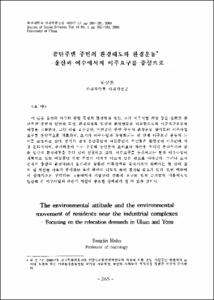쥐전층각막이식 모델을 이용한 각막이식거부반응 연구
- Alternative Title
- Corneal graft rejection reaction in the rat penetrating keratoplasty model
- Abstract
- Penetrating keratoplasty in inbred Lewis rat with either Lewis donor corneas(syngeneic transplantation group) or Brown Norway donor corneas(disparate transplantation group) were performed. The kinetic changes of the inflammatory cell subtypes in the corneal transplantation site and the clinical features were studied.
All grafts(10 grafts) were remained clear in the syngeneic group. There was a significant inflammatory reaction in the wound especially surrounding the sutures. These cells were mostly macrophages(OX-42). This response in the wound progressively diminished by third week. Rare T helper/inducer cells(W3/25) were noted in the graft early. By the second week this response in the graft had resolved.
Nine grafts out of 10 were rejected by the third week in the disparate group. Macrophages were seen in moderate numbers in the graft and wound during the first week. By the second week T helper/inducer cells and T suppressor/cytotoxic cells(OX-8) Increased. In third or fourth week T suppressor/cytotoxic cells were most prominent cells in the rejected graft. The ratio of these three cell types(T suppressor/cytotoxic : T helper/inducer cell:macrophage) in the rejected cornea was 1.5:1:0.8.
Penetrating keratoplasty in inbred Lewis rat with either Lewis donor corneas(syngeneic transplantation group) or Brown Norway donor corneas(disparate transplantation group) were performed. The kinetic changes of the inflammatory cell subtypes in the corneal transplantation site and the clinical features were studied.
All grafts(10 grafts) were remained clear in the syngeneic group. There was a significant inflammatory reaction in the wound especially surrounding the sutures. These cells were mostly macrophages(OX-42). This response in the wound progressively diminished by third week. Rare T helper/inducer cells(W3/25) were noted in the graft early. By the second week this response in the graft had resolved.
Nine grafts out of 10 were rejected by the third week in the disparate group. Macrophages were seen in moderate numbers in the graft and wound during the first week. By the second week T helper/inducer cells and T suppressor/cytotoxic cells(OX-8) Increased. In third or fourth week T suppressor/cytotoxic cells were most prominent cells in the rejected graft. The ratio of these three cell types(T suppressor/cytotoxic : T helper/inducer cell:macrophage) in the rejected cornea was 1.5:1:0.8.
- Issued Date
- 1993
- Type
- Research Laboratory
- Alternative Author(s)
- Tchah, Hungwon
- Publisher
- 울산의대학술지
- Language
- kor
- Rights
- 울산대학교 저작물은 저작권에 의해 보호받습니다.
- Citation Volume
- 2
- Citation Number
- 2
- Citation Start Page
- 98
- Citation End Page
- 104
- Appears in Collections:
- Research Laboratory > The ULSAN university medical journal
- 파일 목록
-
-
Download
 000002023881.pdf
기타 데이터 / 1.39 MB / Adobe PDF
000002023881.pdf
기타 데이터 / 1.39 MB / Adobe PDF
-
Items in Repository are protected by copyright, with all rights reserved, unless otherwise indicated.